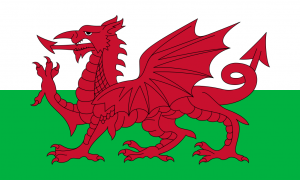Language/Welsh/Grammar/How-to-Use-Be
Hi Welsh learners! 😊
In this lesson, you will learn how to use the verb "be" in Welsh. Using "be" is essential to form sentences in Welsh, and mastering it will help you become more fluent in the language. We will cover the basic rules and provide examples to illustrate them. By the end of this lesson, you will be able to use "be" correctly in Welsh sentences. Let's get started!
Don't miss the chance to check out these pages as you wrap up this lesson: Plurals & Adjectives.
"Be" in Welsh[edit | edit source]
"Be" is the verb that denotes existence, identity, and state of being in Welsh. It is usually translated into English as "am," "is," or "are." Its forms are irregular and need to be learnt by heart. Here is a table that shows how "be" is conjugated in Welsh:
| Welsh | Pronunciation | English |
|---|---|---|
| Ydw | /ʊd/ | Am/was/are |
| Wyt | /wɪt/ | Are/were |
| Mae | /maɪ/ | Is/was/are/were |
Examples[edit | edit source]
Here are some examples of how "be" is used in Welsh:
Person 1: Dych chi'n hapus? (Are you happy?) Person 2: Ydw. (Yes, I am.)
Person 1: Ble mae'r bwced? (Where is the bucket?) Person 2: Mae yn yr ardd. (It is in the garden.)
Person 1: Wyt ti'n dysgu Cymraeg? (Are you learning Welsh?) Person 2: Na, dw i ddim. (No, I am not.)
Negative Sentences[edit | edit source]
To make a negative sentence in Welsh, "nid" is added to "ydw," "wyt," or "mae." For example:
Person 1: Dych chi wedi gweld y ffilm? (Have you seen the movie?) Person 2: Nid ydw i wedi ei weld. (No, I have not seen it.)
Person 1: Wyt ti'n mwynhau darllen? (Do you enjoy reading?) Person 2: Nid wyf i'n mwynhau darllen yn aml. (I do not enjoy reading often.)
Questions[edit | edit source]
To form a question in Welsh, the word order is typically switched around, and the verb comes first. For example:
Person 1: Rai o’ch chi yn hoffi? (What do you like?) Person 2: Dwi'n hoffi coffi ac amser hamdden. (I like coffee and leisure time.)
Person 1: Oes eisiau i chi helpu? (Do you need help?) Person 2: Na, diolch. (No, thanks.)
Soft Mutation[edit | edit source]
In Welsh, the word following the verb "be" will undergo soft mutation in certain situations, such as:
- After the negative particle "nid": nid ydw i'n hapus (I am not happy) - When using the word "yn" to connect the subject and the predicate: Dych chi'n siarad Cymraeg (You speak Welsh) - When using "mae" to express "there is/are" or equivalents. Mae adar yn yr ardd (There are birds in the garden)
The mutations can change the initial consonant of the word, or add an initial "h" sound.
Conclusion[edit | edit source]
Using the verb "be" correctly is essential for anyone learning Welsh to communicate in Welsh with native speakers. The rules can seem complex, but with practice and exposure, you will become more proficient in using "be" correctly. If you want to learn more about Welsh grammar, check out the resources available on Polyglot Club. Thank you for completing this lesson! 😊
➡ If you have any questions, please ask them in the comments section below.
➡ Feel free to edit this wiki page if you think it can be improved. 😎
Great work on completing this lesson! Take a moment to investigate these connected pages: Give your Opinion & Negation.
Other Lessons[edit | edit source]
- How to Use Have
- Conditional Mood
- Future Tense
- Plurals
- The article
- Adjectives
- Pronouns
- Negation
- Give your Opinion
Sources[edit | edit source]
- SOME BASIC RULES OF WELSH GRAMMAR Cynnwys - Contents ...
- Welsh grammar - Wikipedia
- Ball, Martin J., “Variation in grammar”, in The use of Welsh (1988 ...

